DAYBUE- trofinetide solution DAYBUE STIX- trofinetide for solution
Daybue by
Drug Labeling and Warnings
Daybue by is a Prescription medication manufactured, distributed, or labeled by Acadia Pharmaceuticals Inc.. Drug facts, warnings, and ingredients follow.
Drug Details [pdf]
-
HIGHLIGHTS OF PRESCRIBING INFORMATION
These highlights do not include all the information needed to use DAYBUE or DAYBUE STIX safely and effectively. See full prescribing information for DAYBUE and DAYBUE STIX.
DAYBUE® (trofinetide) oral solution
DAYBUE® STIX (trofinetide) for oral solution
Initial U.S. Approval: 2023INDICATIONS AND USAGE
DAYBUE and DAYBUE STIX are indicated for the treatment of Rett syndrome in adults and pediatric patients 2 years of age and older. (1)
DOSAGE AND ADMINISTRATION
- Recommended dosage is twice daily, morning and evening, according to patient weight. DAYBUE or DAYBUE STIX can be given with or without food. (2.1)
Patient Weight Recommended Dosage 9 kg to less than 12 kg 5,000 mg twice daily 12 kg to less than 20 kg 6,000 mg twice daily 20 kg to less than 35 kg 8,000 mg twice daily 35 kg to less than 50 kg 10,000 mg twice daily 50 kg or more 12,000 mg twice daily - Can be given orally or via gastrostomy (G) tube; doses administered via gastrojejunal (GJ) tubes must be administered through the G-port. (2.1)
- See Full Prescribing Information for instruction on dissolving DAYBUE STIX for oral solution powder. (2.3)
- See Full Prescribing Information for dosage recommendations in patients with renal impairment. (2.6, 8.6)
DOSAGE FORMS AND STRENGTHS
CONTRAINDICATIONS
None. (4)
WARNINGS AND PRECAUTIONS
- Diarrhea: Most patients experience diarrhea during treatment with DAYBUE. Advise patients to stop laxatives before starting DAYBUE or DAYBUE STIX. If diarrhea occurs, patients should start antidiarrheal treatment, increase oral fluids, and notify their healthcare provider. Interrupt, reduce dose, or discontinue DAYBUE or DAYBUE STIX if severe diarrhea occurs or if dehydration is suspected. (2.4, 5.1)
- Weight Loss: Weight loss may occur in patients treated with DAYBUE or DAYBUE STIX. Monitor weight and interrupt, reduce dose, or discontinue DAYBUE or DAYBUE STIX if significant weight loss occurs. (2.4, 5.2)
- Vomiting: Aspiration and aspiration pneumonia have occurred after vomiting in patients treated with DAYBUE. Interrupt, reduce dose, or discontinue DAYBUE or DAYBUE STIX if vomiting is severe or occurs despite medical management. (2.5, 5.3)
ADVERSE REACTIONS
The most common adverse reactions (that occurred in at least 10% of DAYBUE-treated patients and at least 2% greater than in placebo) were diarrhea and vomiting. (6.1)
To report SUSPECTED ADVERSE REACTIONS, contact Acadia Pharmaceuticals Inc. at 1-844-422-2342 or FDA at 1-800-FDA-1088 or www.fda.gov/medwatch.
DRUG INTERACTIONS
- Orally administered CYP3A and/or P-gp sensitive substrates for which a small change in substrate plasma concentration may lead to serious adverse reactions: closely monitor for adverse reactions with concomitant use. (7.1)
USE IN SPECIFIC POPULATIONS
Severe renal impairment: DAYBUE and DAYBUE STIX are not recommended. (8.6)
See 17 for PATIENT COUNSELING INFORMATION and FDA-approved patient labeling.
Revised: 12/2025
-
Table of Contents
FULL PRESCRIBING INFORMATION: CONTENTS*
1 INDICATIONS AND USAGE
2 DOSAGE AND ADMINISTRATION
2.1 Recommended Dosage
2.2 DAYBUE Oral Solution Preparation
2.3 DAYBUE STIX for Oral Solution Preparation
2.4 Dose Modification for Diarrhea or Weight Loss
2.5 Dose Modification for Vomiting After Administration
2.6 Dosage Recommendations in Patients with Renal Impairment
2.7 Missed Dose
3 DOSAGE FORMS AND STRENGTHS
4 CONTRAINDICATIONS
5 WARNINGS AND PRECAUTIONS
5.1 Diarrhea
5.2 Weight Loss
5.3 Vomiting
6 ADVERSE REACTIONS
6.1 Clinical Trials Experience
6.2 Postmarketing Experience
7 DRUG INTERACTIONS
7.1 Effect of DAYBUE and DAYBUE STIX on Other Drugs
8 USE IN SPECIFIC POPULATIONS
8.1 Pregnancy
8.2 Lactation
8.4 Pediatric Use
8.5 Geriatric Use
8.6 Renal Impairment
11 DESCRIPTION
12 CLINICAL PHARMACOLOGY
12.1 Mechanism of Action
12.2 Pharmacodynamics
12.3 Pharmacokinetics
13 NONCLINICAL TOXICOLOGY
13.1 Carcinogenesis, Mutagenesis, Impairment of Fertility
14 CLINICAL STUDIES
16 HOW SUPPLIED/STORAGE AND HANDLING
16.1 How Supplied
16.2 Storage and Handling
17 PATIENT COUNSELING INFORMATION
- * Sections or subsections omitted from the full prescribing information are not listed.
- 1 INDICATIONS AND USAGE
-
2 DOSAGE AND ADMINISTRATION
2.1 Recommended Dosage
The recommended dosage of DAYBUE or DAYBUE STIX is based on patient weight as shown in Table 1. Administer DAYBUE or DAYBUE STIX orally or via gastrostomy (G) tube twice daily, in the morning and evening, with or without food. Doses administered via gastrojejunal (GJ) tubes must be administered through the G-port.
Table 1 Recommended Dosage of DAYBUE or DAYBUE STIX in Patients 2 Years of Age and Older Patient Weight Recommended Dosage 9 kg to less than 12 kg 5,000 mg twice daily 12 kg to less than 20 kg 6,000 mg twice daily 20 kg to less than 35 kg 8,000 mg twice daily 35 kg to less than 50 kg 10,000 mg twice daily 50 kg or more 12,000 mg twice daily 2.2 DAYBUE Oral Solution Preparation
Table 2 includes the volume of DAYBUE oral solution to administer for the corresponding recommended dosage [see Dosage and Administration (2.1, 2.6)]. A calibrated measuring device, such as an oral syringe or oral dosing cup, should be obtained from the pharmacy to measure and deliver the prescribed dose accurately. A household measuring cup, teaspoon, or tablespoon is not an adequate measuring device.
Table 2 Recommended Volume of DAYBUE Oral Solution for Administration Dosage DAYBUE Oral Solution Volume - * Dosage for patients with moderate renal impairment [see Dosage and Administration (2.6)]
2,500 mg twice daily* 12.5 mL twice daily 3,000 mg twice daily* 15 mL twice daily 4,000 mg twice daily* 20 mL twice daily 5,000 mg twice daily 25 mL twice daily 6,000 mg twice daily 30 mL twice daily 8,000 mg twice daily 40 mL twice daily 10,000 mg twice daily 50 mL twice daily 12,000 mg twice daily 60 mL twice daily Discard any unused DAYBUE oral solution after 14 days of first opening the bottle [see How Supplied/Storage and Handling (16.2)].
2.3 DAYBUE STIX for Oral Solution Preparation
Prior to administration, DAYBUE STIX for oral solution powder must be dissolved in a cold to room temperature water or water-based beverage (juice, tea, lemonade, limeade, or liquid hydration).
Preparation of DAYBUE STIX
- Determine the correct dosage as shown in Table 1 or Table 4 (for patients with moderate renal impairment).
- Select the appropriate packet strength and number of packets required for each dose, as shown in Table 3.
- Determine the appropriate volume of liquid within the recommended volume range as shown in Table 3, based on individual patient factors (e.g., age, palatability).
- Measure the volume of liquid determined in Step 3 by using a calibrated measuring device obtained from the pharmacy.
- Empty the entire contents of the DAYBUE STIX packet(s) into the measured liquid. Do not attempt to use partial packets to prepare a dose.
- Stir until the powder is completely dissolved.
- Administer the prepared oral solution immediately; do not store for future use.
- Discard any prepared oral solution that is not immediately administered.
Table 3 Preparation Instructions for DAYBUE STIX for Oral Solution Powder Dose DAYBUE STIX Packet(s) Needed to Prepare Each Dose Volume of Liquid Required to Dissolve Entire Dose*, † - * Liquid types include water or water-based beverage.
- † Volume should be selected within the recommended range based on individual patient factors.
5,000 mg One 5,000 mg packet 15 mL to 60 mL 6,000 mg One 6,000 mg packet 15 mL to 60 mL 8,000 mg One 8,000 mg packet 25 mL to 120 mL 10,000 mg Two 5,000 mg packets 30 mL to 120 mL
(each packet requires 15 mL to 60 mL)12,000 mg Two 6,000 mg packets 30 mL to 120 mL
(each packet requires 15 mL to 60 mL)2.4 Dose Modification for Diarrhea or Weight Loss
Advise patients to stop laxatives before starting DAYBUE or DAYBUE STIX. Interrupt, reduce dose, or discontinue DAYBUE or DAYBUE STIX if severe diarrhea occurs, if dehydration is suspected, or if significant weight loss occurs [see Warnings and Precautions (5.1, 5.2)].
2.5 Dose Modification for Vomiting After Administration
If vomiting occurs after DAYBUE or DAYBUE STIX administration, an additional dose should not be taken. Instead, continue with the next scheduled dose. Interrupt, reduce dose, or discontinue DAYBUE or DAYBUE STIX if vomiting is severe or occurs despite medical management [see Warnings and Precautions (5.3)].
2.6 Dosage Recommendations in Patients with Renal Impairment
No dosage adjustment is recommended for patients with mild renal impairment (estimated glomerular filtration rate [eGFR] 60 to 89 mL/min for adult patients or 60 to 89 mL/min/1.73 m2 for pediatric patients). The recommended dosage of DAYBUE or DAYBUE STIX for patients with moderate renal impairment (eGFR 30 to 59 mL/min for adult patients or 30 to 59 mL/min/1.73 m2 for pediatric patients) is described in Table 4 [see Use in Specific Populations (8.6), Clinical Pharmacology (12.3)]. DAYBUE and DAYBUE STIX are not recommended for patients with severe renal impairment (eGFR less than 30 mL/min for adult patients or less than 30 mL/min/1.73 m2 for pediatric patients).
For patients with moderate renal impairment who require a dose less than 5,000 mg, DAYBUE oral solution is recommended. Do not attempt to use partial packets of DAYBUE STIX to prepare a dose.
Table 4 Recommended Dosage of DAYBUE or DAYBUE STIX in Patients with Moderate Renal Impairment Patient Weight Recommended Dosage - * Use DAYBUE oral solution to administer this dosage.
9 kg to less than 12 kg 2,500 mg twice daily* 12 kg to less than 20 kg 3,000 mg twice daily* 20 kg to less than 35 kg 4,000 mg twice daily* 35 kg to less than 50 kg 5,000 mg twice daily 50 kg or more 6,000 mg twice daily - 3 DOSAGE FORMS AND STRENGTHS
- 4 CONTRAINDICATIONS
-
5 WARNINGS AND PRECAUTIONS
5.1 Diarrhea
In Study 1 [see Clinical Studies (14)] and in long-term studies, 85% of patients treated with DAYBUE experienced diarrhea. In those treated with DAYBUE, 49% either had persistent diarrhea or recurrence after resolution despite dose interruptions, reductions, or concomitant antidiarrheal therapy. Diarrhea severity was of mild or moderate severity in 96% of cases. In Study 1, antidiarrheal medication was used in 51% of patients treated with DAYBUE.
Advise patients to stop laxatives before starting DAYBUE or DAYBUE STIX. If diarrhea occurs, patients should notify their healthcare provider, consider starting antidiarrheal treatment, and monitor hydration status and increase oral fluids, if needed. Interrupt, reduce dose, or discontinue DAYBUE or DAYBUE STIX if severe diarrhea occurs or if dehydration is suspected [see Dosage and Administration (2.4)].
5.2 Weight Loss
In Study 1, 12% of patients treated with DAYBUE experienced weight loss of greater than 7% from baseline, compared to 4% of patients who received placebo. In long-term studies, 2.2% of patients discontinued treatment with DAYBUE due to weight loss.
Monitor weight and interrupt, reduce dose, or discontinue DAYBUE or DAYBUE STIX if significant weight loss occurs [see Dosage and Administration (2.4)].
5.3 Vomiting
In Study 1, vomiting occurred in 29% of patients treated with DAYBUE and in 12% of patients who received placebo [see Adverse Reactions (6.1)].
Patients with Rett syndrome are at risk for aspiration and aspiration pneumonia. Aspiration and aspiration pneumonia have been reported following vomiting in patients being treated with DAYBUE. Interrupt, reduce dose, or discontinue DAYBUE or DAYBUE STIX if vomiting is severe or occurs despite medical management [see Dosage and Administration (2.5)].
-
6 ADVERSE REACTIONS
The following clinically significant adverse reactions are described elsewhere in labeling:
- Diarrhea [see Warnings and Precautions (5.1)]
- Weight Loss [see Warnings and Precautions (5.2)]
- Vomiting [see Warnings and Precautions (5.3)]
6.1 Clinical Trials Experience
Because clinical trials are conducted under widely varying conditions, adverse reaction rates observed in the clinical trials of a drug cannot be directly compared to rates in the clinical trials of another drug and may not reflect the rates observed in practice.
In controlled and uncontrolled trials in patients with Rett syndrome, 260 patients ages 2 to 40 years were treated with DAYBUE, including 109 patients treated for more than 6 months, 69 patients treated for more than 1 year, and 4 patients treated for more than 2 years.
The safety of DAYBUE STIX has been established from an adequate, well-controlled study, and open-label studies of DAYBUE [see Clinical Studies (14)]. Below is a display of the adverse reactions of DAYBUE in these studies.
Adult and Pediatric Patients with Rett Syndrome 5 Years of Age and Older
The safety of DAYBUE was evaluated in a randomized, double-blind, placebo-controlled, 12-week study of patients with Rett syndrome (Study 1) [see Clinical Studies (14)]. In Study 1, 93 patients received DAYBUE and 94 patients received placebo. All patients were female, 92% were White, and the mean age was 11 years (range 5 to 20 years).
Adverse Reactions Leading to Discontinuation of Treatment
Eighteen patients (19%) receiving DAYBUE had adverse reactions that led to withdrawal from the study. The most common adverse reaction leading to discontinuation of treatment with DAYBUE was diarrhea (15%).
Common Adverse Reactions
Adverse reactions that occurred in Study 1 in at least 5% of patients treated with DAYBUE and were at least 2% more frequent than in patients on placebo are presented in Table 5.
Table 5 Adverse Reactions in at Least 5% of Patients Treated with DAYBUE and at Least 2% Greater than Placebo in Study 1 Adverse Reaction DAYBUE
(N=93)
%Placebo
(N=94)
%Diarrhea 82 20 Vomiting 29 12 Fever 9 4 Seizure 9 6 Anxiety 8 1 Decreased appetite 8 2 Fatigue 8 2 Nasopharyngitis 5 1 Pediatric Patients with Rett Syndrome 2 to 4 Years of Age
In an open-label study in pediatric patients 2 to 4 years of age with Rett syndrome, a total of 13 patients received DAYBUE for at least 12 weeks and 9 patients received DAYBUE for at least 6 months. Adverse reactions in pediatric patients 2 to 4 years of age treated with DAYBUE were similar to those reported in adult and pediatric patients 5 years of age and older with Rett syndrome in Study 1.
6.2 Postmarketing Experience
The following adverse reactions have been identified during postapproval use of DAYBUE. Because these reactions are reported voluntarily from a population of uncertain size, it is not always possible to reliably estimate their frequency or establish a causal relationship to drug exposure.
Aspiration and aspiration pneumonia secondary to vomiting [see Warnings and Precautions (5.3)].
-
7 DRUG INTERACTIONS
7.1 Effect of DAYBUE and DAYBUE STIX on Other Drugs
CYP3A and/or P-gp Substrates
Closely monitor patients when DAYBUE or DAYBUE STIX is administered concomitantly with sensitive CYP3A and/or P-gp substrates where minimal increases in the plasma concentration of these substrates may lead to serious adverse reactions. Trofinetide, a weak inhibitor of CYP3A and an inhibitor of P-gp, increased the plasma concentrations of CYP3A and/or P-gp substrates [see Clinical Pharmacology (12.3)], which may increase the risk of adverse reactions associated with these substrates.
-
8 USE IN SPECIFIC POPULATIONS
8.1 Pregnancy
Risk Summary
There are no adequate data on the developmental risks associated with the use of DAYBUE or DAYBUE STIX in pregnant women. No adverse developmental effects were observed following oral administration of trofinetide to pregnant animals at doses associated with plasma exposures below those used clinically [see Animal Data].
The estimated background risk of major birth defects and miscarriage for the indicated population is unknown. In the U.S. general population, the estimated background risk of major birth defects and miscarriage in clinically recognized pregnancies is 2 to 4% and 15 to 20%, respectively.
Data
Animal Data
Oral administration of trofinetide (0, 150, 450, or 1000 mg/kg twice daily; 0, 300, 900, or 2000 mg/kg/day) to pregnant rats during the period of organogenesis resulted in no adverse effects on embryofetal development. At the highest dose tested, plasma exposure (AUC) was less than that in humans at the maximum recommended human dose (MRHD) of 12,000 mg twice daily (24,000 mg/day).
Oral administration of trofinetide (0, 75, 150, or 300 mg/kg twice daily; 0, 150, 300, or 600 mg/kg/day) to pregnant rabbits during the period of organogenesis resulted in no adverse effects on embryofetal development. At the highest dose tested, plasma exposure (AUC) was less than that in humans at the MRHD.
Oral administration of trofinetide (0, 150, 450, or 1000 mg/kg twice daily; 0, 300, 900, or 2000 mg/kg/day) to rats throughout pregnancy and lactation resulted in no adverse effects on pre- and postnatal development. At the highest dose tested, plasma exposure (AUC) was less than that in humans at the MRHD.
8.2 Lactation
Risk Summary
There is no information regarding the presence of trofinetide or its metabolites in human milk, the effects on the breastfed infant, or the effects on milk production. The developmental and health benefits of breastfeeding should be considered along with the mother's clinical need for DAYBUE or DAYBUE STIX and any potential adverse effects on the breastfed infant from the treatment or from the underlying maternal condition.
8.4 Pediatric Use
The safety and effectiveness of DAYBUE and DAYBUE STIX for the treatment of Rett syndrome have been established in pediatric patients aged 2 years and older. The safety and effectiveness of DAYBUE for the treatment of Rett syndrome in pediatric patients 5 years of age and older was established in a randomized, double-blind, placebo-controlled, 12-week study (Study 1), which included 108 pediatric patients age 5 to less than 12 years of age and 47 pediatric patients age 12 to less than 17 years of age [see Adverse Reactions (6.1) and Clinical Studies (14)]. Use of DAYBUE or DAYBUE STIX in patients 2 to 4 years of age is supported by evidence from Study 1 and pharmacokinetic and safety data in 13 pediatric patients 2 to 4 years of age treated with DAYBUE for 12 weeks [see Dosage and Administration (2.1), Adverse Reactions (6.1), Clinical Pharmacology (12.3), and Clinical Studies (14)].
Safety and effectiveness in pediatric patients less than 2 years of age have not been established.
Juvenile Animal Data
Oral administration of trofinetide (0, 150, 300, or 1000 mg/kg twice daily; 0, 300, 600, or 2000 mg/kg/day) to rats from postnatal day (PND) 13-14 through 28 weeks of age resulted in no adverse effects on growth or neurobehavioral function. Plasma exposures at the highest dose tested were similar to those in pediatric patients at recommended doses.
Oral administration of trofinetide (0, 150, 300, or 1000 mg/kg twice daily; 0, 300, 600, or 2000 mg/kg/day) to juvenile rats for 10 weeks beginning on PND 13-14 resulted in no adverse effects on sexual maturation or reproductive function. Plasma exposures at the highest dose tested were similar to those in pediatric patients at recommended doses.
8.5 Geriatric Use
Clinical studies of DAYBUE did not include patients 65 years of age and older to determine whether or not they respond differently from younger patients. This drug is known to be substantially excreted by the kidney. Because elderly patients are more likely to have decreased renal function, it may be useful to monitor renal function.
8.6 Renal Impairment
Mild renal impairment is not expected to impact the exposure of trofinetide; therefore, dosage adjustment is not necessary. Dosage adjustment of DAYBUE or DAYBUE STIX is recommended in patients with moderate renal impairment (adult: eGFR 30 to 59 mL/min; pediatric: eGFR 30 to 59 mL/min/1.73 m2) [see Dosage and Administration (2.6), Clinical Pharmacology (12.3)]. Administration of DAYBUE or DAYBUE STIX to patients with severe renal impairment (eGFR less than 30 mL/min for adults or less than 30 mL/min/1.73 m2 for pediatrics) is not recommended.
-
11 DESCRIPTION
DAYBUE oral solution and DAYBUE STIX for oral solution contain the active moiety trofinetide. The chemical name of trofinetide is (2S)-2-{[(2S)-1-(2-aminoacetyl)-2-methylpyrrolidine-2-carbonyl]amino}pentanedioic acid (IUPAC). The molecular formula of trofinetide is C13H21N3O6 and its molecular weight is 315.33 g/mol. The chemical structure is shown below.
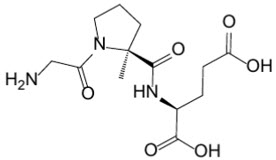
Trofinetide is a white to off-white solid and is freely soluble in water.
DAYBUE oral solution is pink to red in color and contains 1 g of trofinetide in each 5 mL of solution (200 mg/mL). The oral solution also contains FD&C Red No. 40, maltitol, methylparaben sodium, propylparaben sodium, purified water, strawberry flavor, and sucralose as inactive ingredients.
DAYBUE STIX for oral solution is a white, off-white to pinkish powder to be dissolved in a cold to room temperature water or water-based beverage before administration and contains 5,000 mg, 6,000 mg, or 8,000 mg of trofinetide in each packet. The for oral solution powder contains natural strawberry flavor and sucralose as inactive ingredients.
-
12 CLINICAL PHARMACOLOGY
12.1 Mechanism of Action
The mechanism by which trofinetide exerts therapeutic effects in patients with Rett syndrome is unknown.
12.3 Pharmacokinetics
DAYBUE STIX for oral solution demonstrated comparable bioavailability to DAYBUE oral solution in adult healthy subjects under fasted state.
Trofinetide exhibits linear kinetics with no time- or dose-dependent effect on pharmacokinetic parameters. Systemic exposure to trofinetide was dose-proportional across the studied dose range. Minimal to no accumulation was observed following multiple-dose administration.
Absorption
The time to maximum drug concentration (Tmax) is about 2 to 3 hours after administration. Based on the mass balance study, at least 84% of the administered dose was absorbed following oral administration of 12,000 mg trofinetide.
Effect of Food
Coadministration of trofinetide with a high-fat meal had no impact on the total exposure (AUC0-inf) of trofinetide and reduced the peak plasma concentration (Cmax) by approximately 20% [see Dosage and Administration (2.1)].
Distribution
Following oral administration, the apparent volume of distribution of trofinetide in adult healthy subjects was approximately 80 L. Trofinetide protein binding in human plasma is less than 6%.
Elimination
The effective elimination half-life of orally administered trofinetide in healthy subjects is about 1.5 hours.
Specific Populations
Pediatric Patients
The drug exposure of trofinetide in pediatric patients ages 2 to 4 years of age is similar to children older than 4 years and adults when following the recommended dosage [see Dosage and Administration (2.1)].
Patients with Renal Impairment
Based on population PK analysis of clinical trials data, patients with mild renal impairment (eGFR 60 to 89 mL/min/1.73 m2) showed no significant impact on the exposure of trofinetide compared to patients with normal renal function. Based on a renal impairment study in adult subjects, the effect of moderate renal impairment (eGFR 30 to 59 mL/min) increases the exposure (AUC0-inf) of trofinetide approximately 80% compared to patients with normal renal function administered the same dose [see Dosage and Administration (2.6)]. The effect of severe renal impairment on the exposure of trofinetide has not been investigated [see Use in Specific Populations (8.6)].
Drug Interaction Studies
Clinical Studies
CYP3A and/or P-gp Substrates:
Coadministration of trofinetide 12,000 mg twice daily with 4 mg of loperamide (a moderately sensitive CYP3A substrate and a P-gp substrate) increased the AUC of loperamide by 1.73-fold and the Cmax by 1.95-fold [see Drug Interactions (7.1)]. Administration of trofinetide 2 hours prior to loperamide increased the AUC of loperamide by 1.22-fold and the Cmax by 1.44-fold.
In Vitro
Trofinetide is not a substrate of CYP450 enzymes, uridine diphosphate glucuronosyltransferase (UGT), or major drug transporters.
Cytochrome P450 (CYP450) Enzymes:
Trofinetide inhibits CYP3A [see Drug Interactions (7.1)]. Trofinetide inhibits CYP1A2, 2B6, 2C8, 2C19, and 2D6, but is not expected to result in clinically significant drug interactions. Trofinetide does not inhibit CYP2C9.
Transporter Systems:
Trofinetide inhibits P-gp [see Drug Interactions (7.1)], BCRP, and BSEP. Trofinetide inhibits OAT1, OCT2, OATP1B1, OATP1B3, MATE1, and MATE2-K, but is not expected to result in clinically significant drug interactions. Trofinetide does not inhibit OAT3.
-
13 NONCLINICAL TOXICOLOGY
13.1 Carcinogenesis, Mutagenesis, Impairment of Fertility
Carcinogenesis
Studies to evaluate the carcinogenic potential of trofinetide have not been conducted.
Mutagenesis
Trofinetide was negative in in vitro (bacterial reverse mutation, chromosomal aberration in Chinese hamster ovary cells) and in vivo (mouse micronucleus) assays.
Impairment of Fertility
Oral administration of trofinetide (0, 150, 450, or 1000 mg/kg twice daily; 0, 300, 900, or 2000 mg/kg/day) to male and female rats prior to and throughout mating and continuing in females through gestation day 7 resulted in no adverse effects on fertility or reproductive function. Plasma exposures at the highest dose tested were less than that in humans at the maximum recommended human dose of 12,000 mg/dose (24,000 mg/day).
-
14 CLINICAL STUDIES
DAYBUE STIX
The effectiveness of DAYBUE STIX has been established from an adequate and well-controlled study of DAYBUE for the treatment of Rett syndrome and demonstration of similar pharmacokinetics between DAYBUE STIX for oral solution and DAYBUE oral solution [see Clinical Pharmacology (12.3)]. Presented below is a display of the efficacy results of the adequate and well-controlled study of DAYBUE in patients with Rett syndrome.
DAYBUE
The efficacy of DAYBUE for the treatment of Rett syndrome was established in a 12-week randomized, double-blind, placebo-controlled study in patients with Rett syndrome 5 to 20 years of age (Study 1; NCT04181723).
Patients (N=187) had a diagnosis of typical Rett syndrome according to the Rett Syndrome Diagnostic Criteria with a documented disease-causing mutation in the MECP2 gene. Patients were randomized to receive DAYBUE (N=93) or matching placebo (N=94) for 12 weeks. The DAYBUE dosage was based on patient weight to achieve similar exposure in all patients [see Dosage and Administration (2.1)].
The co-primary efficacy measures were change from baseline after 12 weeks of treatment in the total score of the Rett Syndrome Behaviour Questionnaire (RSBQ) and the Clinical Global Impression-Improvement (CGI-I) score. The RSBQ is a 45-item rating scale completed by the caregiver that assesses a range of symptoms of Rett syndrome (breathing, hand movements or stereotypies, repetitive behaviors, night-time behaviors, vocalizations, facial expressions, eye gaze, and mood). Each item is scored as 0 (not true), 1 (somewhat or sometimes true), or 2 (very true or often true), with a maximum possible score of 90 points. Lower scores reflect lesser severity in signs and symptoms of Rett syndrome. The CGI-I is rated by clinicians to assess whether a patient has improved or worsened on a 7-point scale (1=very much improved to 7=very much worse) in which a decrease in score indicates improvement.
Treatment with DAYBUE demonstrated a statistically significant difference in favor of DAYBUE as compared to placebo on the co-primary efficacy endpoints, the change from baseline in RSBQ total score, and the CGI-I score at week 12 (Table 6, Figure 1, and Figure 2).
Table 6 Summary of Study 1 Efficacy Results Mean Baseline Score (SE) Mean Week 12 Score (SE) LS Mean Change from Baseline to Week 12 (SE) DAYBUE-Placebo Treatment Difference, LS Mean (95% CI)* p-value CI=confidence interval; LS mean=least-squares mean; SE=standard error - * Difference in LS mean from the mixed-effect model for repeated measure analysis
RSBQ DAYBUE 43.7 (1.21) 39.9 (1.38) -4.9 (0.94) -3.2
(-5.7, -0.6)0.018 Placebo 44.5 (1.26) 42.8 (1.42) -1.7 (0.90) CGI-I DAYBUE -- 3.5 (0.08) -- -0.3
(-0.5, -0.1)0.003 Placebo -- 3.8 (0.06) Figure 1 Change From Baseline in RSBQ Total Score in Study 1
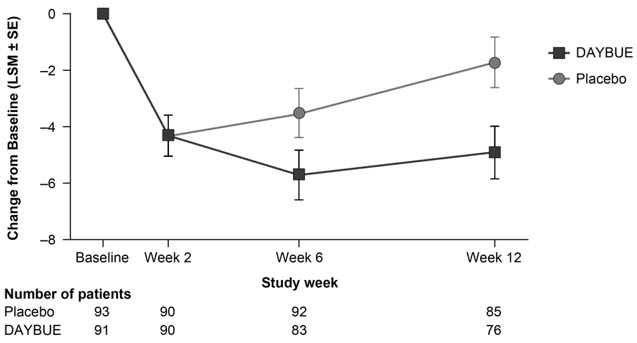
Figure 2 Distribution of CGI-I Scores for Patients Completing Study 1
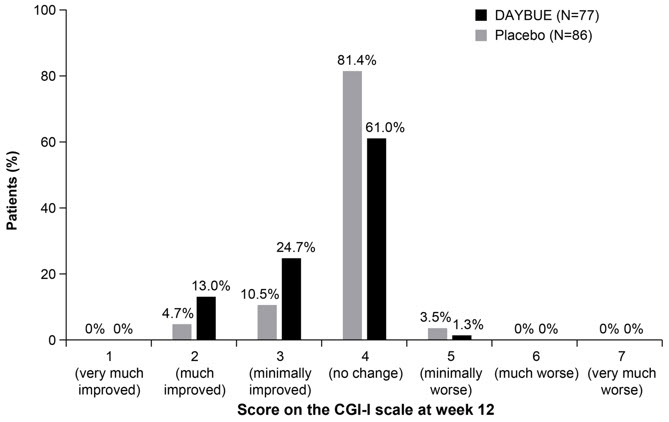
-
16 HOW SUPPLIED/STORAGE AND HANDLING
16.1 How Supplied
DAYBUE (trofinetide) 200 mg/mL oral solution is a pink to red, strawberry flavored solution supplied in a round high-density polyethylene (HDPE) multi-dose bottle with a child-resistant closure containing 450 mL of oral solution (NDC: 63090-660-01).
DAYBUE STIX (trofinetide) for oral solution is a white, off-white to pinkish powder with a strawberry flavor supplied in multi-layer aluminum packets as follows:
Package Configuration and NDC Number Strength Individual Packet Carton of 60 Packets 5,000 mg 63090-663-01 63090-663-60 6,000 mg 63090-664-01 63090-664-60 8,000 mg 63090-665-01 63090-665-60 -
17 PATIENT COUNSELING INFORMATION
Advise the caregiver or patient to read the FDA-approved patient labeling (Patient Information).
Preparation and Administration
Advise the caregiver or patient that DAYBUE or DAYBUE STIX may be given orally or via gastrostomy (G) tube; doses administered via gastrojejunal (GJ) tubes must be administered through the G-port. DAYBUE or DAYBUE STIX may be taken with or without food [see Dosage and Administration (2.1)].
Instruct the caregiver or patient to obtain a calibrated measuring device, such as an oral syringe or oral dosing cup, from the pharmacy. A household measuring cup, teaspoon, or tablespoon is not an adequate measuring device [see Dosage and Administration (2.2, 2.3)].
DAYBUE Oral Solution
Instruct the caregiver or patient to discard any unused DAYBUE oral solution after 14 days from first opening the bottle.
DAYBUE STIX for Oral Solution
Advise the caregiver or patient that DAYBUE STIX for oral solution powder must be dissolved in a cold to room temperature water or water-based beverage (juice, tea, lemonade, limeade, or liquid hydration) prior to administration [see Dosage and Administration (2.3)]. Instruct the caregiver or patient on how much water or water-based beverage is needed to dissolve the contents of DAYBUE STIX packet(s).
Instruct the caregiver or patient to administer the prepared oral solution immediately and not to store for future use. Any prepared oral solution not administered must be discarded.
Instruct patients to not attempt to use partial packets to prepare a dose.
Diarrhea
Advise the caregiver or patient that DAYBUE or DAYBUE STIX can cause diarrhea. Instruct the patient to stop taking laxatives before starting DAYBUE or DAYBUE STIX. If diarrhea occurs, patients should notify their healthcare provider, consider starting antidiarrheal treatment, and monitor hydration status and increase oral fluids, if needed [see Warnings and Precautions (5.1)].
Weight Loss
Inform the caregiver or patient that DAYBUE or DAYBUE STIX may cause weight loss and to notify their healthcare provider if weight loss occurs [see Warnings and Precautions (5.2)].
Vomiting
Advise the caregiver or patient that DAYBUE or DAYBUE STIX can cause vomiting and if vomiting occurs after DAYBUE or DAYBUE STIX administration, do not take an additional dose, but continue with the next scheduled dose [see Dosage and Administration (2.5)]. Instruct patients to notify their healthcare provider if vomiting does not stop despite medical management [see Warnings and Precautions (5.3)].
Storage
DAYBUE Oral Solution
Keep bottles of DAYBUE upright and refrigerated before and after opening. Do not freeze [see How Supplied/Storage and Handling (16.2)].
- SPL UNCLASSIFIED SECTION
-
PATIENT PACKAGE INSERT
PATIENT INFORMATION DAYBUE® (day-BYOO)
(trofinetide)
oral solutionDAYBUE® STIX (day-BYOO STIX)
(trofinetide)
for oral solutionThis Patient Information has been approved by the U.S. Food and Drug Administration Issued: 12/2025 What is DAYBUE or DAYBUE STIX? - DAYBUE or DAYBUE STIX are prescription medicines used to treat Rett syndrome in adults and children 2 years of age and older.
Before taking DAYBUE or DAYBUE STIX, tell your healthcare provider about all of your medical conditions, including if you: - have kidney problems.
- are pregnant or plan to become pregnant. It is not known if DAYBUE or DAYBUE STIX will harm your unborn baby.
- are breastfeeding or plan to breastfeed. It is not known if DAYBUE or DAYBUE STIX passes into your breast milk. Talk to your healthcare provider about the best way to feed your baby while taking DAYBUE or DAYBUE STIX.
Taking DAYBUE or DAYBUE STIX with certain medicines may affect the way other medicines work and can cause serious side effects.
Know the medicines you take. Keep a list of them to show your healthcare provider and pharmacist when you get a new medicine.How should I take DAYBUE or DAYBUE STIX? - Take DAYBUE or DAYBUE STIX exactly as your healthcare provider tells you to take it.
- If you have kidney problems, talk to your healthcare provider about the right dose of DAYBUE or DAYBUE STIX.
- If you take laxatives, stop taking them before starting treatment with DAYBUE or DAYBUE STIX.
- DAYBUE or DAYBUE STIX may be given by mouth or through a gastrostomy (G) tube. If DAYBUE or DAYBUE STIX is given through a gastrojejunal (GJ) tube, the G-port must be used.
- DAYBUE or DAYBUE STIX may be taken with or without food.
- Your pharmacist should provide an oral syringe or dosing cup that is needed to measure your prescribed dose of DAYBUE or the amount of liquid to mix with DAYBUE STIX powder. A household measuring cup, teaspoon, or tablespoon is not an adequate measuring device.
-
If you are taking DAYBUE oral solution:
- Throw away any unused DAYBUE oral solution after 14 days of first opening the bottle.
-
If you are taking DAYBUE STIX for oral solution:
- Open each packet only when you are ready to use it.
- DAYBUE STIX powder must be dissolved in cold to room temperature water or water-based beverage (juice, tea, lemonade, or liquid hydration).
- Your healthcare provider will tell you how much cold to room temperature water or water-based beverage to use to dissolve the powder in each packet.
- Empty the entire contents of the DAYBUE STIX packets needed for your prescribed dose into the measured liquid. Do not attempt to use part of a packet.
- Stir until the powder is completely dissolved.
- After the powder is dissolved, take the prepared oral solution right away. Do not store for future use.
- Throw away any prepared oral solution that was not taken.
- Your healthcare provider may change your dose or stop treatment with DAYBUE or DAYBUE STIX if needed.
- If you vomit after taking a dose of DAYBUE or DAYBUE STIX, do not take another dose to make up for that dose. Wait and take the next dose at your usual time. Call your healthcare provider if your vomiting does not stop.
- If you miss a dose of DAYBUE or DAYBUE STIX, skip that dose and take your next dose at your usual time. Do not take 2 doses to make up the missed dose.
What are the possible side effects of DAYBUE or DAYBUE STIX?
DAYBUE or DAYBUE STIX may cause side effects, including:- Diarrhea. Diarrhea is a common side effect of DAYBUE or DAYBUE STIX that can sometimes be severe. Diarrhea may cause you to lose too much water from your body (dehydration). Tell your healthcare provider if you have diarrhea while taking DAYBUE or DAYBUE STIX. Your healthcare provider may ask you to increase the amount you drink or take antidiarrheal medicine as needed.
- Weight loss. DAYBUE or DAYBUE STIX can cause weight loss. Tell your healthcare provider if you notice you are losing weight at any time during treatment with DAYBUE or DAYBUE STIX.
- Vomiting. Vomiting is a common side effect of DAYBUE or DAYBUE STIX. Sometimes vomit can get into your lungs (aspiration), which could cause an infection (aspiration pneumonia). Tell your healthcare provider if you have severe vomiting or if vomiting happens often.
These are not all the possible side effects of DAYBUE or DAYBUE STIX. Tell your healthcare provider if you have any side effects that bother you or do not go away. For more information, ask your healthcare provider or pharmacist. Call your doctor for medical advice about side effects. You may report side effects to FDA at 1-800-FDA-1088.How should I store DAYBUE or DAYBUE STIX? -
DAYBUE oral solution:
- Store DAYBUE oral solution bottle in the refrigerator between 36°F to 46°F (2°C to 8°C). Do not freeze.
- Keep DAYBUE oral solution bottle in an upright position.
- Keep the child-resistant cap on the bottle tightly closed.
-
DAYBUE STIX for oral solution:
- Store DAYBUE STIX for oral solution powder packets at room temperature between 68°F to 77°F (20°C to 25°C).
General information about the safe and effective use of DAYBUE or DAYBUE STIX.
Medicines are sometimes prescribed for purposes other than those listed in a Patient Information leaflet. Do not use DAYBUE or DAYBUE STIX for a condition for which it was not prescribed. Do not give DAYBUE or DAYBUE STIX to other people, even if they have the same symptoms that you have. It may harm them. You can ask your pharmacist or healthcare provider for information about DAYBUE or DAYBUE STIX that is written for health professionals.What are the ingredients in DAYBUE or DAYBUE STIX?
Active ingredient: trofinetide
DAYBUE oral solution inactive ingredients: FD&C Red No. 40, maltitol, methylparaben sodium, propylparaben sodium, purified water, strawberry flavor, and sucralose.
DAYBUE STIX for oral solution inactive ingredients: natural strawberry flavor and sucralose.
Marketed by Acadia Pharmaceuticals Inc., San Diego, CA 92130 USA
DAYBUE is a registered trademark of Acadia Pharmaceuticals Inc.
©2025 Acadia Pharmaceuticals Inc. All rights reserved.
For more information, go to www.daybue.com or call 1-844-422-2342. -
PRINCIPAL DISPLAY PANEL – 450 ML ORAL SOLUTION BOTTLE LABEL
NDC: 63090-660-01
450 mL
Rx onlyDaybue™
(trofinetide)
oral solution200 mg/mL
Recommended Dosage:
See prescribing information.For oral or G-tube administration only.
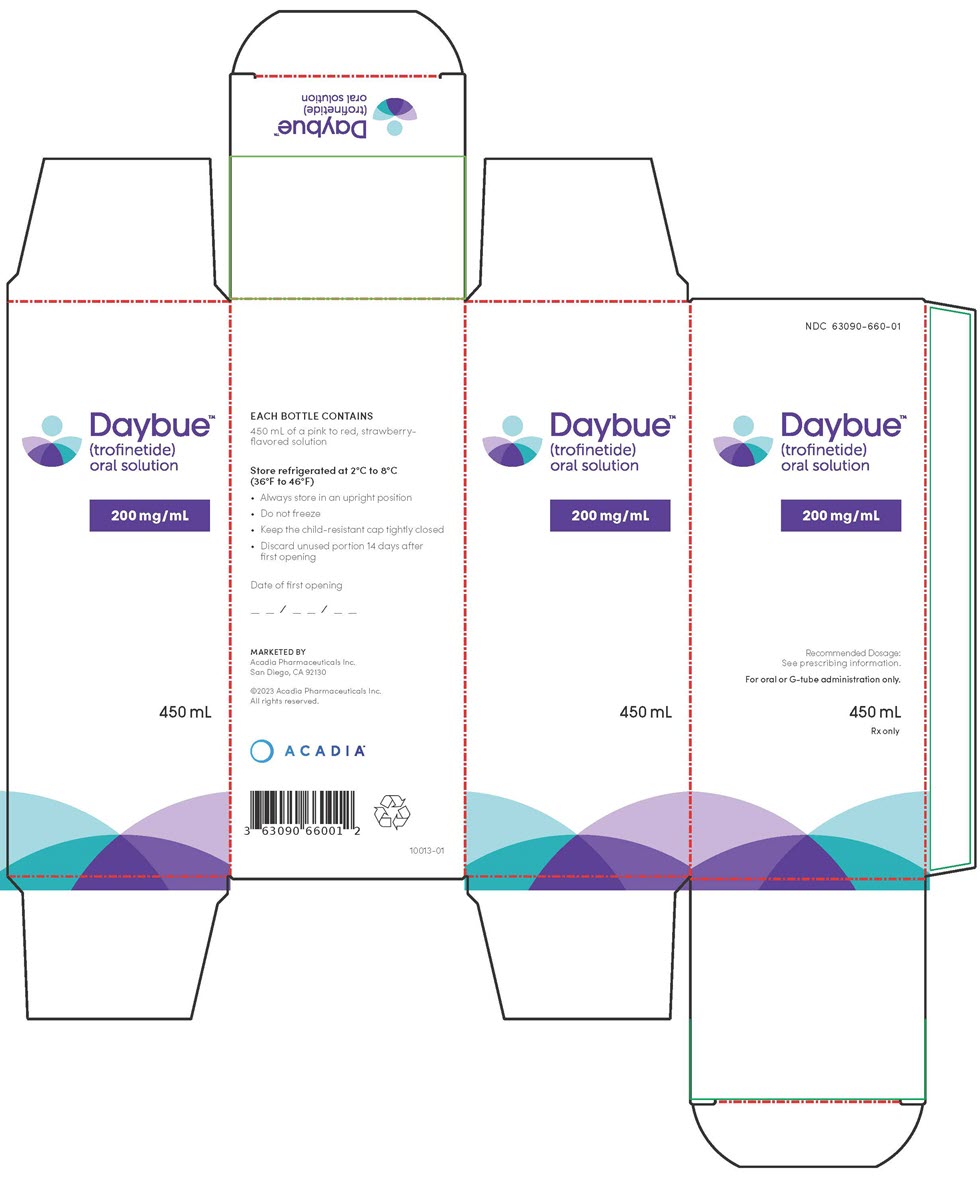
-
PRINCIPAL DISPLAY PANEL – 450 ML ORAL SOLUTION BOTTLE CARTON
NDC: 63090-660-01
Daybue™
(trofinetide)
oral solution200 mg/mL
Recommended Dosage:
See prescribing information.For oral or G-tube administration only.
450 mL
Rx only

-
PRINCIPAL DISPLAY PANEL – 5,000 MG FOR ORAL SOLUTION POWDER PACKET
NDC: 63090-663-01
Daybue® Stix
(trofinetide)
for oral solution5,000 mg
For Oral or G-tube administration only
Keep out of reach of children
Rx Only

-
PRINCIPAL DISPLAY PANEL – 5,000 MG FOR ORAL SOLUTION POWDER CARTON
NDC: 63090-663-60
Daybue® Stix
(trofinetide)
for oral solution5,000 mg
per packetFor Oral or G-tube
administration only60 Packets
Rx Only
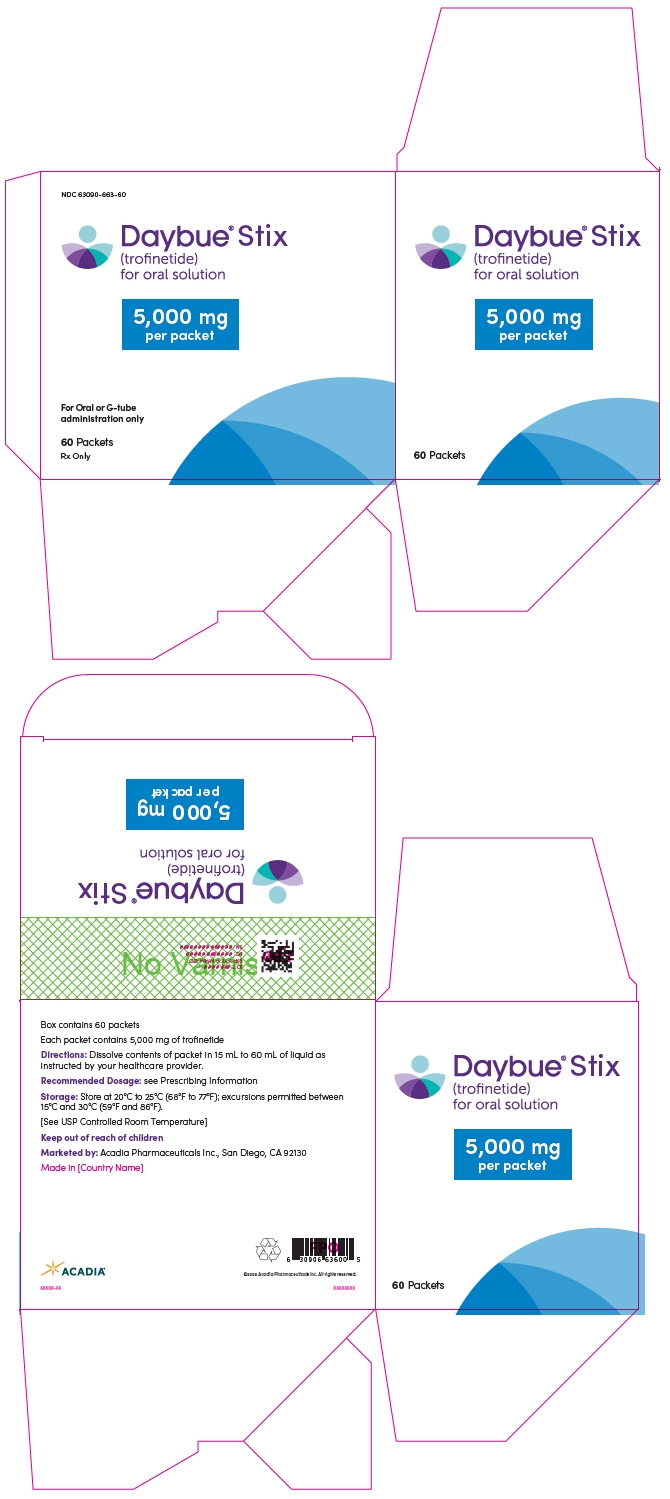
-
PRINCIPAL DISPLAY PANEL – 6,000 MG FOR ORAL SOLUTION POWDER PACKET
NDC: 63090-664-01
Daybue® Stix
(trofinetide)
for oral solution6,000 mg
For Oral or G-tube administration only
Keep out of reach of children
Rx Only
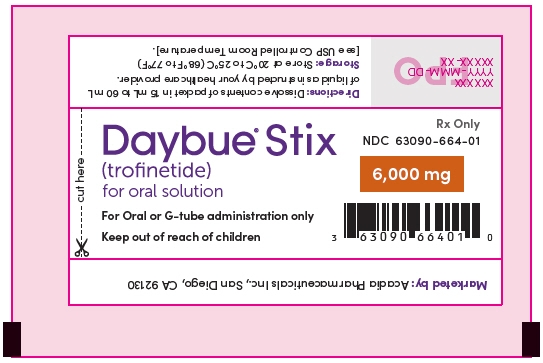
-
PRINCIPAL DISPLAY PANEL – 6,000 MG FOR ORAL SOLUTION POWDER CARTON
NDC: 63090-664-60
Daybue® Stix
(trofinetide)
for oral solution6,000 mg
per packetFor Oral or G-tube
administration only60 Packets
Rx Only
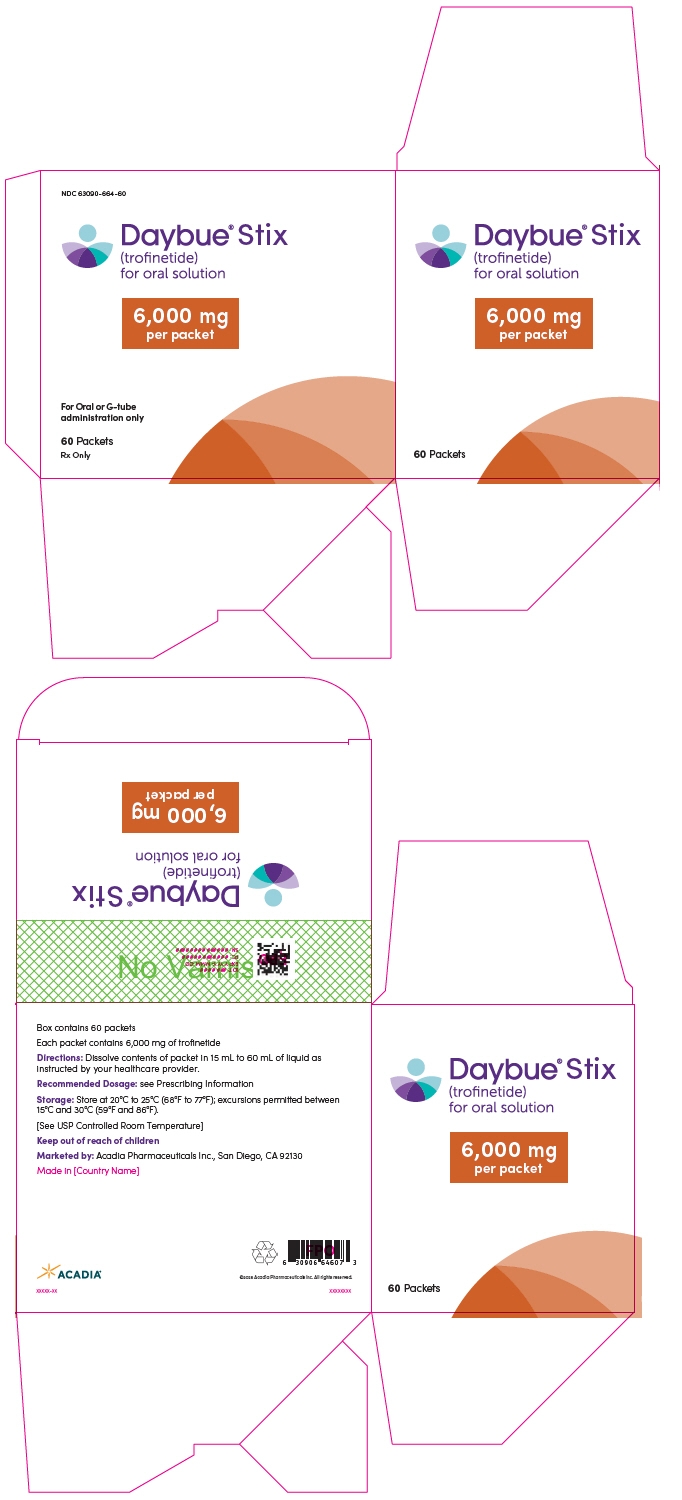
-
PRINCIPAL DISPLAY PANEL – 8,000 MG FOR ORAL SOLUTION POWDER PACKET
NDC: 63090-665-01
Daybue® Stix
(trofinetide)
for oral solution8,000 mg
For Oral or G-tube administration only
Keep out of reach of children
Rx Only
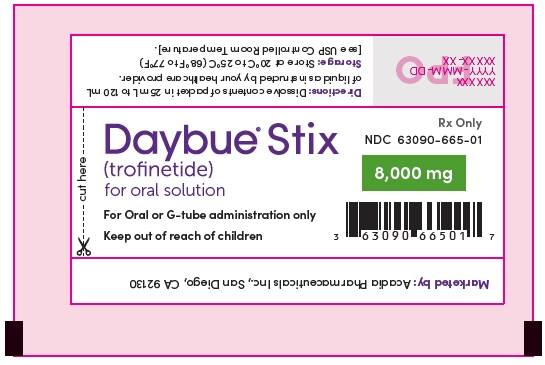
-
PRINCIPAL DISPLAY PANEL – 8,000 MG FOR ORAL SOLUTION POWDER CARTON
NDC: 63090-665-60
Daybue® Stix
(trofinetide)
for oral solution8,000 mg
per packetFor Oral or G-tube
administration only60 Packets
Rx Only
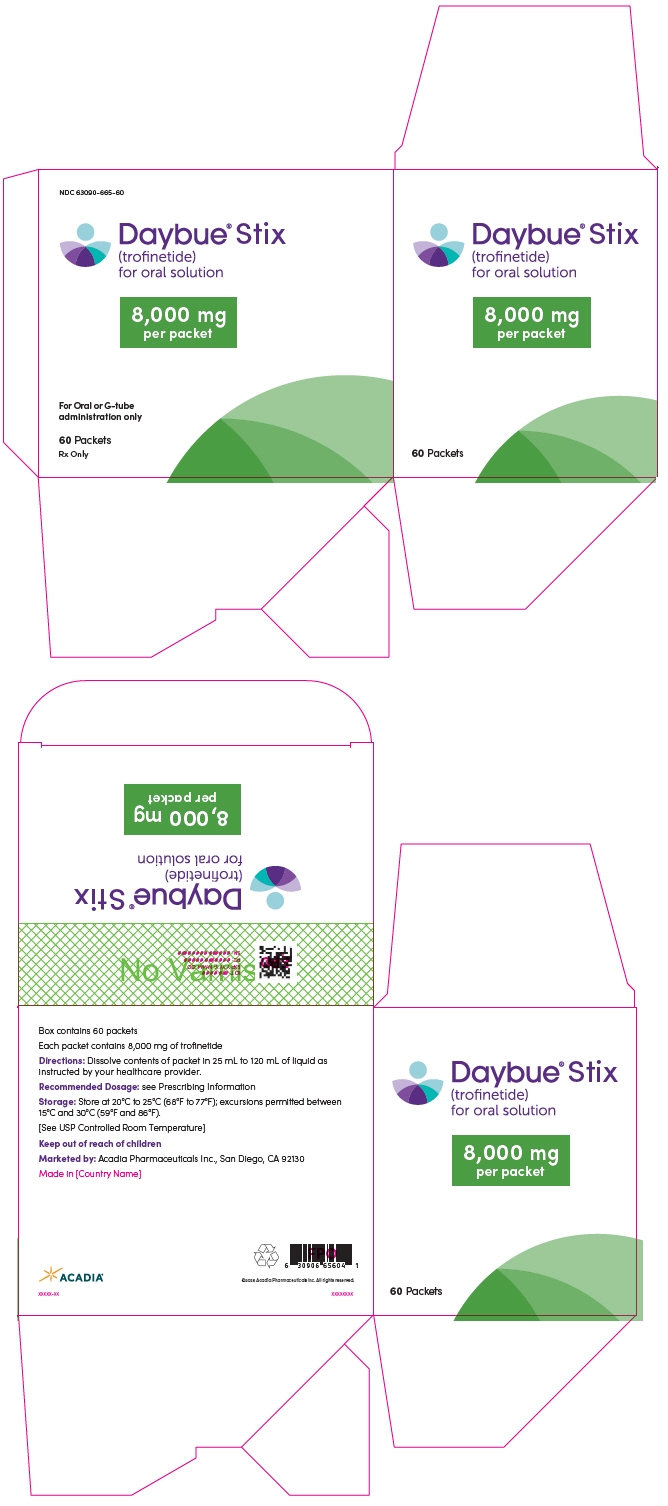
-
INGREDIENTS AND APPEARANCE
DAYBUE
trofinetide solutionProduct Information Product Type HUMAN PRESCRIPTION DRUG Item Code (Source) NDC: 63090-660 Route of Administration ORAL Active Ingredient/Active Moiety Ingredient Name Basis of Strength Strength trofinetide (UNII: Z2ME8F52QL) (trofinetide - UNII:Z2ME8F52QL) trofinetide 200 mg in 1 mL Inactive Ingredients Ingredient Name Strength maltitol (UNII: D65DG142WK) methylparaben sodium (UNII: CR6K9C2NHK) propylparaben sodium (UNII: 625NNB0G9N) FD&C RED NO. 40 (UNII: WZB9127XOA) sucralose (UNII: 96K6UQ3ZD4) water (UNII: 059QF0KO0R) Product Characteristics Color PINK (Pink to red) Score Shape Size Flavor STRAWBERRY Imprint Code Contains Packaging # Item Code Package Description Marketing Start Date Marketing End Date 1 NDC: 63090-660-01 1 in 1 CARTON 03/10/2023 1 450 mL in 1 BOTTLE, PLASTIC; Type 0: Not a Combination Product Marketing Information Marketing Category Application Number or Monograph Citation Marketing Start Date Marketing End Date NDA NDA217026 03/10/2023 DAYBUE STIX
trofinetide for solutionProduct Information Product Type HUMAN PRESCRIPTION DRUG Item Code (Source) NDC: 63090-663 Route of Administration ORAL Active Ingredient/Active Moiety Ingredient Name Basis of Strength Strength trofinetide (UNII: Z2ME8F52QL) (trofinetide - UNII:Z2ME8F52QL) trofinetide 5000 mg Inactive Ingredients Ingredient Name Strength sucralose (UNII: 96K6UQ3ZD4) Product Characteristics Color PINK (white, off-white to pinkish) Score Shape Size Flavor STRAWBERRY Imprint Code Contains Packaging # Item Code Package Description Marketing Start Date Marketing End Date 1 NDC: 63090-663-60 60 in 1 CARTON 12/11/2025 1 NDC: 63090-663-01 1 in 1 PACKET; Type 0: Not a Combination Product Marketing Information Marketing Category Application Number or Monograph Citation Marketing Start Date Marketing End Date NDA NDA219884 12/11/2025 DAYBUE STIX
trofinetide for solutionProduct Information Product Type HUMAN PRESCRIPTION DRUG Item Code (Source) NDC: 63090-664 Route of Administration ORAL Active Ingredient/Active Moiety Ingredient Name Basis of Strength Strength trofinetide (UNII: Z2ME8F52QL) (trofinetide - UNII:Z2ME8F52QL) trofinetide 6000 mg Inactive Ingredients Ingredient Name Strength sucralose (UNII: 96K6UQ3ZD4) Product Characteristics Color PINK (white, off-white to pinkish) Score Shape Size Flavor STRAWBERRY Imprint Code Contains Packaging # Item Code Package Description Marketing Start Date Marketing End Date 1 NDC: 63090-664-60 60 in 1 CARTON 12/11/2025 1 NDC: 63090-664-01 1 in 1 PACKET; Type 0: Not a Combination Product Marketing Information Marketing Category Application Number or Monograph Citation Marketing Start Date Marketing End Date NDA NDA219884 12/11/2025 DAYBUE STIX
trofinetide for solutionProduct Information Product Type HUMAN PRESCRIPTION DRUG Item Code (Source) NDC: 63090-665 Route of Administration ORAL Active Ingredient/Active Moiety Ingredient Name Basis of Strength Strength trofinetide (UNII: Z2ME8F52QL) (trofinetide - UNII:Z2ME8F52QL) trofinetide 8000 mg Inactive Ingredients Ingredient Name Strength sucralose (UNII: 96K6UQ3ZD4) Product Characteristics Color PINK (white, off-white to pinkish) Score Shape Size Flavor STRAWBERRY Imprint Code Contains Packaging # Item Code Package Description Marketing Start Date Marketing End Date 1 NDC: 63090-665-60 60 in 1 CARTON 12/11/2025 1 NDC: 63090-665-01 1 in 1 PACKET; Type 0: Not a Combination Product Marketing Information Marketing Category Application Number or Monograph Citation Marketing Start Date Marketing End Date NDA NDA219884 12/11/2025 Labeler - Acadia Pharmaceuticals Inc. (963571302)
Trademark Results [Daybue]
Mark Image Registration | Serial | Company Trademark Application Date |
|---|---|
 DAYBUE 90906301 not registered Live/Pending |
ACADIA Pharmaceuticals, Inc. 2021-08-27 |
© 2025 FDA.report
This site is not affiliated with or endorsed by the FDA.